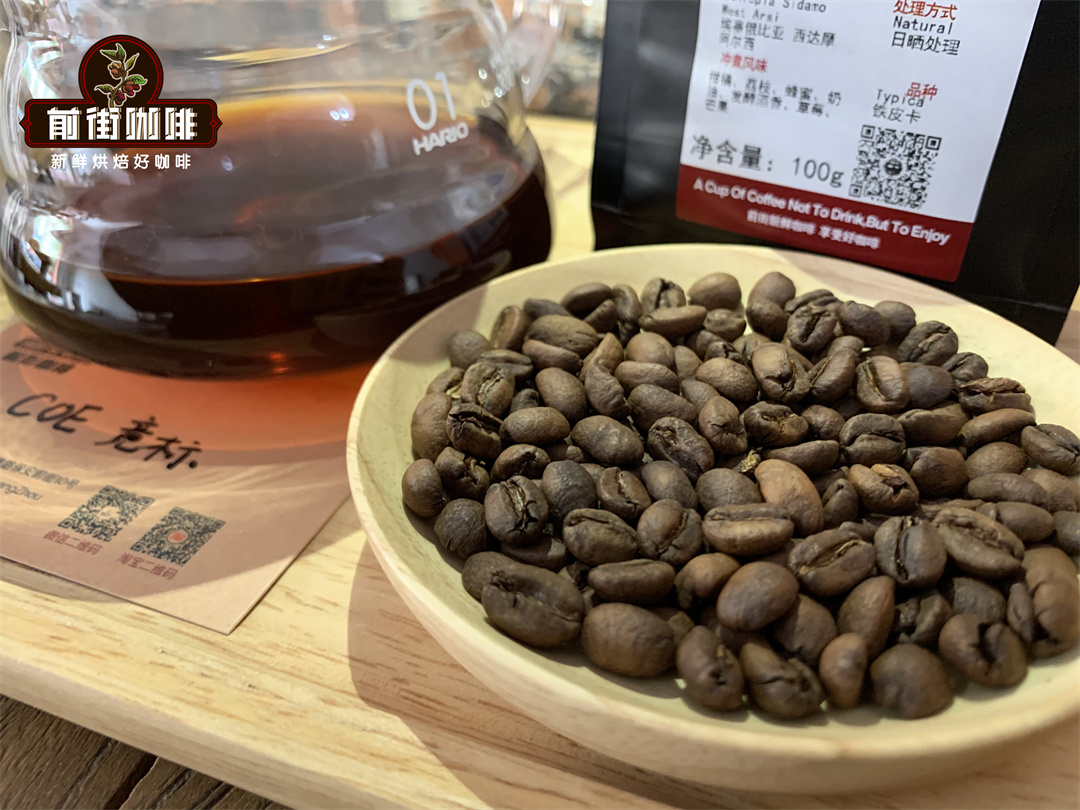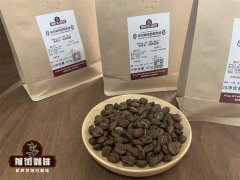What are the best types of coffee beans? recommended brewing coffee beans are preferred.
When we buy a bag of coffee from the supermarket, we notice that there is more than one type of coffee bean. But how many coffee beans are there? If you care about what kind of coffee you drink, you may be having a headache with all the mixed information about coffee types. The label on the coffee bag didn't help either. So let Front Street Coffee help with that.
Arabica coffee is the most common and the most popular. Arabica coffee (also known as Typica) is the most common ingredient in coffee. This coffee originated in Ethiopia. Some might argue that it was originally discovered in Yemen. In fact, it was discovered and domesticated in Ethiopia and soon thereafter brought to Yemen, where it became popular in the port city of Mocha.
Arabica coffee is a less caffeinated version because it contains only 1.5% caffeine. It happens to be a sweeter, fatter bean than Robusta. This produces a tastier, milder coffee that many people prefer. Overall, Arabica coffee and its subspecies account for about 60% of global coffee production. Arabica beans are susceptible to pests and diseases, a sore point in the history of the coffee industry.
Arabica coffee's growing essentials are exceptional, as it requires an average of about 21 C per year to thrive, humidity, sun and shade, and high altitude. Not many countries can provide this landscape and climate.
Robusta is a tougher, more resistant coffee bean.
Robusta coffee beans also originally came from Ethiopia, but it wasn't until about 100 years after Arabica coffee was born that it was considered an independent coffee bean. Its name comes primarily from the fact that it is highly resistant to pests and diseases, so it ends up producing larger crops each year than Arabica beans.
But the downside is that Robusta tastes much worse, which is inappropriate for many people. People often say it resembles burnt tires and dirt, but part of it is also affected by the way it is baked. Considering that Robusta has less than half the sugar and fat content of Arabica coffee, but twice the caffeine content (2.7%), it begins to understand why it is not a favorite of the general population.
When it comes to espresso, Robusta seems to be the coffee bean of choice. This is because its chemical composition helps it produce a lot of coffee oil, and espresso is used to make it.
Seeing that Robusta's flavor is so strong, it's also more recommended for latte beans to make iced lattes, because the coffee flavor emanates and the brewed coffee is stronger than Arabica by default.
Coffee mixed with Arabica coffee and Robusta coffee. This is done to balance taste with caffeine content, since Arabica caffeine is low in caffeine.
Some coffee subspecies are cultivated for commercial use
Arabica coffee beans and robusta coffee beans have many subspecies. And they are rarely called subspecies, partly because they have their own names and partly because people don't actually know them.
For example, you can find a bag of "100% Arabica" next to "Arabica and Blue Mountain Coffee Blend" and correctly assume that Blue Mountain Coffee is a different type of coffee than Arabica Coffee.
Liberia
When coffee rust decimated Arabica coffee crops, it was brought to the Philippines. This coffee has a more woody flavor, with a hint of smoke. It also has floral fragrance, but this coffee is quite difficult.
blue Mountain
Blue Mountain coffee grown only in Jamaica, this coffee is not very bitter, there is a sweeter side. It's a variant of regular Arabica coffee.
bourbon
A subspecies of arabica coffee grown chiefly on reunion island in the indian ocean. It mutated and developed its own flavor and was introduced into East Africa some time later (1897). There it was called French Missionaries because it was introduced to the region by French Missionaries. In Rwanda, bourbon is known as Mayagurez.
katim
This subspecies is a cross between Caturra and Timer subspecies, both of which are Bourbon subspecies. This is common in coffee bean lineages, with many strains only slightly different from the original coffee bean, but with different names.
Why coffee beans are diversified in the coffee industry
What makes such a huge collection of coffee beans, and if it wasn't great coffee to begin with, how did Robusta rise? Well, first of all Arabica is a very sensitive plant. I am talking mainly about pests and diseases, but also about sunlight and direct sunlight and shade and general living conditions.
This is a rather laborious plant, it does not flower until a few years after the first planting (3-5 years), and when it blooms and then produces coffee cherries, it is not abundant.
Arabica coffee yields much less than Robusta coffee, which means many plants are needed.
Thus, on a fateful day in 1867, coffee rust became widely known in Sri Lanka, then known as Ceylon (hence Ceylon tea btw). The fungus originally came from Ethiopia, but how it spread all the way to Sri Lanka is unknown.
The point is that large coffee farms became useless because Arabica coffee was susceptible to infection and until today there was no known cure.
So Robusta was planted in the infected areas of Arabica, hoping to drive away the fungus. It worked, and now much of Asia's Robusta crop is attributed to the event.
That's not the only reason Robusta grew there (and not just there), but it's an important factor.
Liberica was also asked to help in some places where the fungus spread, and it was able to resist it and grow successfully.
Since then, the coffee industry has grown more and more coffee subspecies, hybrids meant to be tasty and disease-resistant, some bred to have a certain aroma, and so on.

where these beans come from.
Coffee beans have certain needs that must be met. They require considerable rainfall, so there is fresh water around, the air should not be very dry (although a subspecies grows in the African desert), and the altitude must be at least 1200 meters (0.74 miles and above).
The soil must be fertile soil, as nutrients must be rich, because coffee is very hungry plants, so to speak. It eats nutrients from the soil fairly quickly, so it needs some type of soil.
Important Notice :
前街咖啡 FrontStreet Coffee has moved to new addredd:
FrontStreet Coffee Address: 315,Donghua East Road,GuangZhou
Tel:020 38364473
- Prev

What is the difference between boutique coffee and coffee cup testing steps and matters needing attention in coffee cup testing
In the coffee world, two chefs defined this unique product called coffee: the roaster and the professional barista. Use fire and a roaster to turn dry coffee beans into something completely different. Baristas use his knowledge and experience to brew roasted beans, extract aromas from hand-brewed coffee and make perfect coffee drinks. First of all, anyone can be a good taster. Secondly, change
- Next

Where is the world's best coffee produced? what's the difference in the taste of all kinds of coffee?
The ideal conditions for the growth of coffee trees can be found all over the world, located in the equatorial zone between 25 degrees north latitude and 30 degrees south latitude, known as the bean belt. Fussy Arabica coffee grows best in high-altitude fertile soil, while healthier robusta coffee prefers higher temperatures and thrives on lower ground. From the species of plants, the chemical composition of soil,
Related
- Beginners will see the "Coffee pull flower" guide!
- What is the difference between ice blog purified milk and ordinary milk coffee?
- Why is the Philippines the largest producer of crops in Liberia?
- For coffee extraction, should the fine powder be retained?
- How does extracted espresso fill pressed powder? How much strength does it take to press the powder?
- How to make jasmine cold extract coffee? Is the jasmine + latte good?
- Will this little toy really make the coffee taste better? How does Lily Drip affect coffee extraction?
- Will the action of slapping the filter cup also affect coffee extraction?
- What's the difference between powder-to-water ratio and powder-to-liquid ratio?
- What is the Ethiopian local species? What does it have to do with Heirloom native species?

